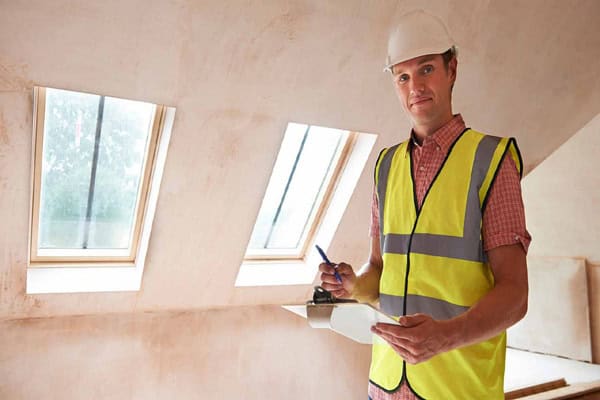
Any house or place of business can be impacted by the ubiquitous problem of mold, which can cause major health problems as well as structural damage. Once mold has been identified and removed, it’s crucial to ensure that the remediation process was effective. This is where post-remediation mold testing comes into play. In this blog post, we will explore the significance of post-remediation mold testing and why it is essential for those seeking mold remediation in Tucson.
Table of Contents
Understanding Mold Remediation
The process of eliminating and cleaning up mold from an interior space is known as mold remediation. The process includes identifying the source of moisture, containing the affected area, removing contaminated materials, and thoroughly cleaning and sanitizing the space. Effective mold remediation aims to eliminate mold spores and prevent future growth.
Health Risks of Mold
Many health problems can arise from exposure to mold, particularly in those who have allergies, asthma, or weakened immune systems. Respiratory issues, skin inflammation, and ocular irritation are possible symptoms. Prolonged exposure to mold can result in more serious health issues, therefore it’s critical to quickly and completely handle mold issues.
Structural Damage
Apart from posing health hazards, mold may seriously harm structures. If not correctly treated, it can degrade structural materials like wood and drywall, necessitating expensive repairs. In order to stop more damage and restore the integrity of the impacted property, mold treatment is required.
What is Post-Remediation Mold Testing?
The process of confirming that mold remediation operations have been successful is called post-remediation mold testing. In order to verify that the atmosphere is safe for habitation and that the mold levels are within allowable bounds, this testing include a comprehensive examination and an evaluation of the air quality.
The Testing Process
Post-remediation mold testing typically involves several steps:
- Visual Inspection: A detailed visual inspection of the remediated area to check for any visible signs of mold or moisture.
- Air Sampling: Collecting air samples to measure mold spore concentrations and compare them to outdoor levels or other non-affected indoor areas.
- Surface Sampling: Swabbing surfaces to detect any residual mold spores on cleaned surfaces.
- Moisture Assessment: Measuring moisture levels in building materials to ensure that they are dry and no longer conducive to mold growth.
Why Post-Remediation Mold Testing is Essential
Verifying the Effectiveness of Remediation
Post-remediation mold testing confirms that the remediation process was successful. It ensures that all mold-contaminated materials have been properly removed or cleaned and that mold levels have returned to normal. This verification is critical for the peace of mind of homeowners and building occupants.
Preventing Recurrence
Mold can return if the underlying moisture problem is not resolved. Testing conducted after remediation aids in locating any residual moisture sources that can encourage the growth of mold in the future. By addressing these issues, property owners can prevent the recurrence of mold and avoid further remediation costs.
Ensuring Health and Safety
The creation of a secure and healthful atmosphere is the main objective of mold remediation. Post-remediation testing ensures that the indoor air quality is safe for occupants, particularly those with health conditions that make them more susceptible to mold-related illnesses. It provides assurance that the space is free from harmful mold spores.
Meeting Regulatory and Insurance Requirements
In some cases, post-remediation mold testing may be required to meet regulatory standards or satisfy insurance requirements. Many insurance companies require proof of successful mold remediation before they will cover related claims. Similarly, building codes and health regulations may mandate post-remediation testing to ensure compliance.
Choosing a Qualified Mold Remediation Professional
To ensure the success of mold remediation and post-remediation testing, it’s important to work with a qualified professional. Here are some tips for choosing the right mold remediation expert:
Look for Certification and Experience
Choose a professional with certification in mold remediation and extensive experience in the field. Certification ensures that the contractor follows industry standards and best practices.
Verify References and Reviews
To determine the caliber of the contractor’s work, look for references and read testimonials from prior customers. Reliable service is indicated by positive comments and delighted clients.
Ensure Comprehensive Services
A qualified mold remediation professional should offer comprehensive services, including mold inspection, remediation, and post-remediation testing. This ensures a thorough and effective approach to mold removal.
Confirm the Use of Proper Equipment
Make sure the contractor uses advanced equipment and techniques for mold remediation and testing. This includes high-quality air samplers, moisture meters, and containment tools.
The Role of Homeowners in Post-Remediation Mold Testing
Homeowners also play a crucial role in ensuring the success of mold remediation and post-remediation testing. Here are some steps homeowners can take:
Address Moisture Problems
Find and address any moisture sources that aided in the development of the mold. This might entail addressing leaks, enhancing ventilation, and managing humidity levels using dehumidifiers.
Maintain Cleanliness
Keep the remediated area clean and dry to prevent mold from returning. A mold-free environment may be preserved with routine upkeep and cleaning.
Monitor for Signs of Mold
Be vigilant for any signs of mold, such as musty odors, visible growth, or health symptoms. Early detection and prompt action can prevent minor issues from becoming major problems.
Conclusion
Post-remediation mold testing is a critical step in the mold remediation process. It verifies the success of remediation efforts, ensures a safe and healthy environment, and helps prevent the recurrence of mold. For those seeking mold remediation in Tucson, working with a qualified professional and taking proactive measures can ensure effective mold removal and long-term peace of mind. By prioritizing post-remediation testing, homeowners can protect their health, property, and investment from the dangers of mold.
Follow – https://sggreek.com for More Updates


